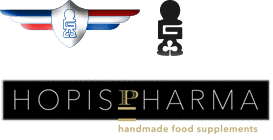Ganoderma lucidum
Immunostimolante, Cardio Vascolare, Antiossidante, Antiinfiammatorio, Antiallergico, Antivirale
ATTIVI: TRITERPENI, ACIDO GANODERMICO, POLISACCARIDI, ACIDO LUCIDENICO, NUCLEOSIDI, ERGOSTEROLI
MEDICINA TRADIZIOANLE CINESE-ADATTOGENESI
Tonifica qi, nutre il sangue e calma la mente
Meridiani: cuore, milza, stomaco, fegato, polmone
Elementi Associati: acqua, legno, fuoco
UN’ICONA DELLA MEDICINA TRADIZIOANLE CINESE
Gli antichi pensavano che esistessero cinque qualità indispensabili della vita, Legno, Fuoco, Terra, Metallo e Acqua, note come le cinque fasi. Ognuna di loro possiede caratteristiche diverse, e tutti i fenomeni e le cose all’interno dell’universo appartengono a una di queste cinque fasi.
L’idea che si è sviluppata grazie alla teoria delle cinque fasi è che tutti i fenomeni e le cose nell’universo siano prodotti del movimento e della mutazione di questi cinque fasi. Essa è anche la teoria filosofica della Medicina Tradizionale Cinese.
In tale contesto il Ganoderma si inserisce come il contrafforte che lega indissolubilmente le due discipline. Il suo corpo fruttifero così come il micelio e le sue spore, sono da sempre, utilizzati nella Medicina Tradizionale Cinese per curare il fegato, l’ipertensione, la glicemia, l’asma, l’insonnia, come antiinfiammatorio, antiossidante ed immunomodulante.
La scienza moderna ha sequenziato ben più di sedicimila geni nel Reishi, essi costituiscono il pool di intervento del nostro fungo poiché andando a codificare per diversi enzimi del citocromo P450 essi sovraintendono alla produzione di molti metaboliti attivi secondari implicati nel mantenimento del nostro buono stato di salute.
Ai giorni nostri, il Ganoderma viene aggiunto un po’ a tutto, noi siamo fermamente convinti che l’assunzione come infuso offerta da eikes rimanga il metro olimpico di paragone per ogni tipo di prodotto.
BIBLIOGRAFIA
Wasson, R.G. Soma: Divine Mushroom of Immortality; Harcourt Brace Jovanovich, Inc.: Los Angeles, CA, USA, 1968; 80–92.
Smith, J.; Rowan, N.; Sullivan, R. Medicinal Mushrooms. Their Therapeutic Properties and Current Medical Usage with Special Emphasis on Cancer Treatment; Special Report Commissioned by Cancer Research UK; The University
of Strathclyde in Glasgow, 2002; 256.
Liu, G.T. Recent advances in research of pharmacology and clinical applications of Ganoderma P. Karst. species (Aphyllophoromycetideae) in China. Int. J. Med. Mushrooms 1999, 1 (1), 63–68.
Zhou, Sh.; Gao, Y. The immunomodulating effects of Ganoderma lucidum (Curt.: Fr.) P. Karst. (Ling Zhi, reishi mushroom) (Aphyllophoromycetideae). Int. J. Med. Mushrooms 2002, 4 (1), 1–11.
Jiang J, Grieb B, Thyagarajan A, Sliva D. Ganoderic acids suppress growth and inva‐ sive behavior of breast cancer cells by modulating AP-1 and NF-κB signaling. Inter‐ national Journal of Molecular Medicine 2008;21(5) 577‒584.
Chen N-H, Liu J-W, Zhong J-J. Ganoderic acid T inhibits tumor invasion in vitro and in vivo through inhibition of MMP expression. Pharmacological Reports 2010;62(1) 150‒163
] Jiang J, Grieb B, Thyagarajan A, Sliva D. Ganoderic acids suppress growth and inva‐ sive behavior of breast cancer cells by modulating AP-1 and NF-κB signaling. Inter‐ national Journal of Molecular Medicine 2008;21(5) 577‒584.
Hsu C-L, Yu Y-S, Yen G-C. Lucidenic acid B induces apoptosis in human leukemia cells via a mitochondria-mediated pathway. Journal of Agricultural Chemistry 2008;56(11) 3973‒3980.
Capasso L. 5300 years ago, the Ice Man used natural laxatives and antibiotics. The Lancet 1998;352(9143) 1864
Gao, Y., Tang, W., Dai, X., Gao, H., Chen, G., Ye, J., Chan, E., Koh, H.L., Li, X., & Zhou, S. (2005). Effects of water-soluble Ganoderma lucidum polysaccharides on the immune functions of patients with advanced lung cancer. Journal of Medicinal Food, Vol.8, No.2, (Summer 2005), pp. 159-168, ISSN 1096-620X
Gao, Y. H., Dai, X. H., Chen, G. L., Ye, J. X., & Zhou, S. F. (2003b). A randomized, placebocontrolled, multicenter study of Ganoderma lucidum (W.Curt.: Fr.) Lloyd (Aphyllophoromycetideae) polysaccharides (Ganoploy (R)) in patients with advanced lung cancer. International Journal of Medicinal Mushrooms, Vol.5, No.4, (December 2003), pp. 369-381, ISSN 1521-9437
Langevin, H.M., Badger, G.J., Povolny, B.K., Davis, R.T., Johnston, A.C., Sherman, K.J., Kahn, J.R., & Kaptchuk, T.J. (2004). Yin scores and yang scores: A new method for quantitative diagnostic evaluation in traditional Chinese medicine research. Journal of Alternative and Complementary Medicine, Vol.10, No.2, (April 2004), pp. 389-395, ISSN 1075-5535
Menendez-Arias, L. Targeting HIV: antiretroviral therapy and development of drug resistance. Trends Pharmacol. Sci. 2002, 23, 381–388.
Vermani, K.; Garg, S. Herbal medicines for sexually transmitted diseases and AIDS. J. Ethnopharmacol. 2002, 80, 49–66.
Eo, S.K.; Kim, Y.S.; Lee, C.K.; Han, S.S. Antiherpetic activities of various protein bound polysaccharides isolated from Ganoderma lucidum. J. Ethnopharmacol. 1999, 68, 175–181
Schoch, C.L., Seifert, K.A., Huhndorf, S., Robert, V., Spouge, J.L., André Levesque, C., Chen, W., and Fungal Barcoding Consortium. 2012. “Nuclear ribosomal internal transcribed spacer (ITS) region as a universal DNA barcode marker for Fungi.” Proc Natl Acad Sci. 109(16): 6241-6246.






